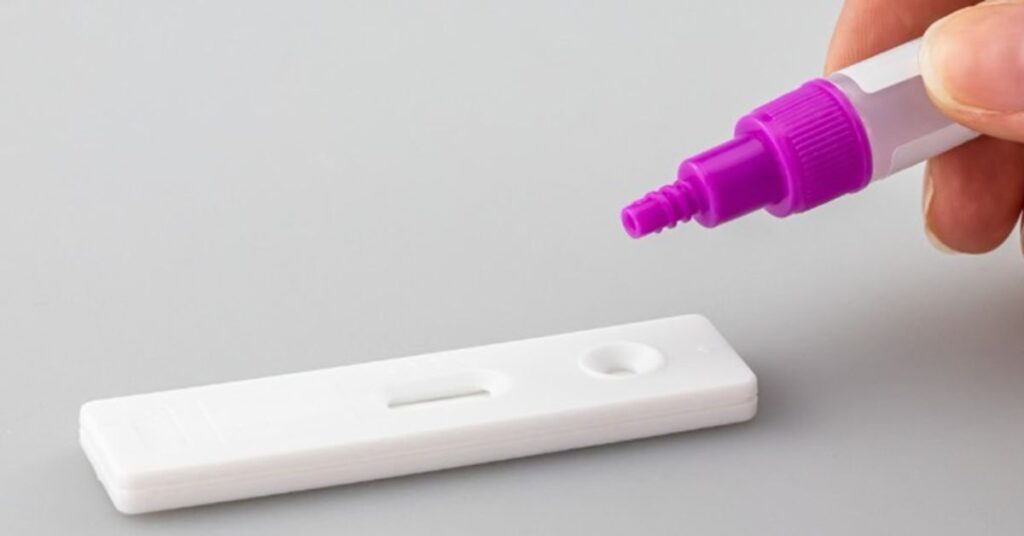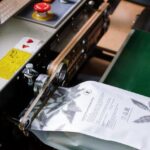The lateral flow assay cassette is a crucial component in rapid diagnostic testing, providing a protective and functional housing for lateral flow test strips. These cassettes are used across various industries, including medical diagnostics, veterinary testing, food safety, and environmental monitoring. With the increasing demand for fast, accurate, and easy-to-use testing methods, the lateral flow assay cassette has become an essential tool for point-of-care diagnostics.
This article explores what a lateral flow assay cassette is, its components, applications, advantages, and considerations for selecting the right type.
What is a Lateral Flow Assay Cassette?
A lateral flow assay cassette is a plastic enclosure that holds the test strip used in lateral flow assays (LFAs). It provides structural support, ensures sample flow, and protects the test strip from contamination. The cassette typically features a sample well, a results window, and a buffer application area, making it easier for users to handle the test and interpret results.
Lateral flow assays are widely used for detecting biomarkers, infectious diseases, hormones, and contaminants in different sample types such as blood, urine, saliva, and environmental samples. The lateral flow assay cassette helps facilitate these tests by offering a user-friendly and reliable format.
Components of a Lateral Flow Assay Cassette
A lateral flow assay cassette consists of several key components that work together to ensure accurate test results. These include:
1. Sample Well
The sample well is the designated area where the user applies the liquid sample. The sample is then absorbed into the test strip and begins the migration process.
2. Conjugate Pad
This pad contains antibodies or reagents conjugated with gold nanoparticles or colored beads. When the sample passes through, these particles bind to the target analyte, forming complexes that move along the strip.
3. Nitrocellulose Membrane
The nitrocellulose membrane is the core of the lateral flow assay cassette, where the test and control lines are located. The test line indicates the presence of the target analyte, while the control line confirms that the test is functioning properly.
4. Absorbent Pad
The absorbent pad at the end of the test strip collects excess liquid, maintaining the flow and ensuring the test runs smoothly.
5. Results Window
This section displays the test outcome, typically as visible lines. One line may indicate a negative result, while two lines often confirm a positive test.
Applications of Lateral Flow Assay Cassettes
The lateral flow assay cassette is widely used across multiple industries due to its efficiency and ease of use. Some key applications include:
1. Medical and Clinical Diagnostics
Lateral flow tests housed in lateral flow assay cassettes are commonly used for detecting infectious diseases, pregnancy tests, and drug screening. Examples include COVID-19 rapid tests, malaria tests, and HIV diagnostic kits.
2. Veterinary Diagnostics
Animal health diagnostics rely on lateral flow assay cassettes to detect diseases in pets and livestock quickly. These tests help veterinarians diagnose infections and monitor animal health.
3. Food Safety Testing
Food manufacturers and regulatory bodies use lateral flow assay cassettes to detect pathogens, allergens, and contaminants in food products, ensuring consumer safety.
4. Environmental Monitoring
Water and soil testing often require lateral flow assay cassettes to detect pollutants, toxins, and harmful bacteria in the environment.
5. Workplace Drug Testing
Many companies implement on-site drug testing using lateral flow assay cassettes to screen employees for controlled substances such as THC, opioids, and amphetamines.
Benefits of Using Lateral Flow Assay Cassettes
The lateral flow assay cassette offers numerous advantages, making it a preferred choice for rapid testing applications.
1. Rapid and Reliable Results
Most lateral flow tests provide results within 5–30 minutes, allowing for immediate decision-making in medical and industrial settings.
2. Ease of Use
Unlike laboratory-based diagnostic tools, lateral flow assay cassettes require minimal training to operate, making them accessible to healthcare professionals and the general public.
3. Portability and Convenience
Compact and lightweight, lateral flow assay cassettes are easy to transport and store, making them ideal for field testing and remote diagnostics.
4. Cost-Effective Solution
Compared to expensive laboratory tests, lateral flow assay cassettes provide a low-cost alternative without compromising accuracy, making them widely accessible.
5. Minimal Equipment Requirements
Lateral flow tests housed in lateral flow assay cassettes do not require specialized lab equipment, making them ideal for point-of-care and at-home testing.
6. Enhanced Protection and Durability
The plastic casing of the lateral flow assay cassette protects the test strip from moisture, dust, and physical damage, ensuring reliable test performance.
Factors to Consider When Choosing a Lateral Flow Assay Cassette
Selecting the right lateral flow assay cassette depends on several factors, including:
1. Sensitivity and Specificity
The accuracy of the test depends on the quality of the cassette and the reagents used. High-sensitivity tests can detect lower concentrations of analytes, reducing false negatives.
2. Sample Type Compatibility
Different tests require different sample types, such as blood, urine, or saliva. Choosing a lateral flow assay cassette designed for the appropriate sample type ensures accurate results.
3. Environmental Conditions
Tests used in extreme temperatures or humid conditions require specially designed lateral flow assay cassettes that can maintain stability and performance.
4. Customization Options
Manufacturers may offer customized lateral flow assay cassettes with unique designs, multi-panel tests, or integrated digital readers for enhanced functionality.
5. Regulatory Compliance
Medical and diagnostic lateral flow assay cassettes must comply with regulatory standards such as FDA, CE, or ISO certifications to ensure safety and effectiveness.
Future Trends in Lateral Flow Assay Cassettes
With advancements in technology, lateral flow assay cassettes are evolving to improve their accuracy and usability. Some emerging trends include:
- Smart Lateral Flow Assay Cassettes: Integration with mobile apps and digital readers for automatic result interpretation and data tracking.
- Multiplex Testing: Development of cassettes that detect multiple diseases or biomarkers in a single test.
- Nanotechnology Integration: Use of nanoparticles for improved sensitivity and faster detection.
- Eco-Friendly Materials: Sustainable and biodegradable cassette designs to reduce environmental impact.
Conclusion
The lateral flow assay cassette is a fundamental component of rapid diagnostic tests, offering a user-friendly and efficient solution for detecting various analytes. Whether in medical, veterinary, food safety, or environmental testing, these cassettes provide reliable results in a convenient and cost-effective format.
As technology continues to advance, lateral flow assay cassettes will become even more sophisticated, improving global healthcare, safety, and disease monitoring efforts.







